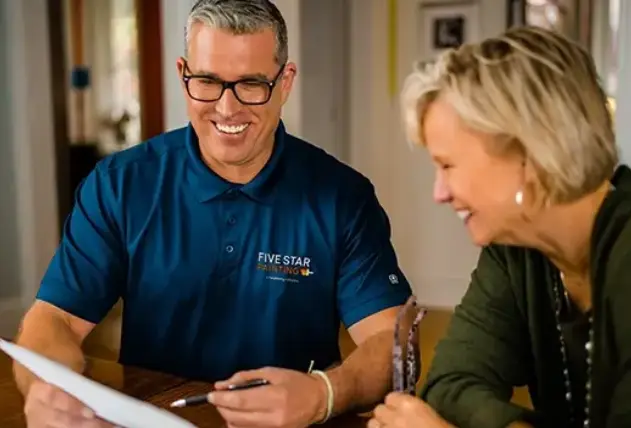The transitional period from infancy to toddlerhood comes with a lot of changes. One of these changes is the update from a nursery environment to a childhood bedroom. Updating your child’s bedroom to better suit their needs can encourage developmental growth and independence. These updates can be as simple as repainting and removing baby decor, and as extensive as replacing baby furniture with “big kid” furniture.
According to a study from the National Library of medicine, many kids begin transitioning from a crib to a bed from the ages of 18 months to three years old. Signs it’s time for them to transition manifest at this age both verbally and through their behavior.
Transition to a Big Kid’s Bed
As with many childhood milestones, there’s no one-size-fits-all answer for when it’s time to transition to a big kid’s bed. However, your child may start to display certain signs that this is a step they want to take. These signs include:
- Constantly climbing out of the crib: If your toddler is consistently crawling out of their crib every time you lay them down for a nap or bedtime, this can be a sign that they’re wanting to be more independent, and ready for a bed without bars.
- Asking for a big-kid bed: One of the simplest signs that your child is ready to say goodbye to their crib is that they are asking for a big-kid bed. Capitalizing on these wants can make the transition easier, as your child is likely to feel more excited than upset.
- They’re physically able: If your child can get in and out of their dining room chair, the couch, or even your bed without help, this is a pretty good sign they can handle their big-kid bed.
- They’re toilet-trained: Easier access to the toilet at nighttime can help influence independence, and result in fewer accidents.
- They’re going to be a big sibling: If you’re expecting another baby, transitioning your child from a crib to a big-kid bed can help them understand their new role as the older sibling. This differentiates them from the new baby and can help inspire independence.
The two most important parts of transitioning your child from a big-kid bed are emotional and physical security. You’ll want to make sure that your child’s new bed, and their room as a whole, are safe for them to maneuver in independently. This can include taking child locks off the door, so they aren’t locked in.
Emotional security is another important part of this transition. If your child isn’t emotionally ready to give up their crib, a pre-mature transition can cause sleep anxiety. Getting your child involved in picking out their new bed can help them feel more emotionally secure about the change.
Swap the Changing Table for a Durable Dresser
The age range when children typically transition to a big-kid bed is also a common range for potty training. This makes furniture like a changing table unneeded in your child’s room. Exchanging your child’s changing table for a dresser is not only more practical, but it can reinforce the idea that they don’t need diapers anymore.
When picking a dresser for your child’s room, you’ll want to consider both durability and accessibility. You’ll want something sturdy so that, if your child decides to climb on it, it won’t fall apart or easily topple over. Accessibility is also important, as letting your child pick out their clothes is another way to introduce independence to them.
Consider Storage: Toys, Books, and More
As kids get older, they tend to have more things that they need access to daily. This can include clothes, toys, books, and even keepsakes. Updating your child’s storage so it’s independently accessible to them can help their room feel like it’s truly theirs. Increased storage can also decrease nighttime injuries, as their toys will have a place to live off the floor and out of their path.
Storage can also be a place where you can update your child’s decor with their help. For example, painting the inside of the closet with your child can be a fun activity to do together. If you don’t want to commit to painting or are living in a rental, you can place decals or contact paper together. This activity can allow them to express themselves in their own space.
Space For Playing and Studying
Incorporating space for learning into your child’s room is another way that you can foster independence. Creating a designated workspace has been proven to increase productivity while working or studying. This study space can be as simple as a desk and a chair — it simply needs to suit your child’s needs.
If your child isn’t in school yet, you can create a reading nook where you practice sounds and letters. You can transition this space into a study space when they’re older, which can help maintain your child’s association with focus and “work” in this area.
Decor and Ambiance
The difference in decor between a nursery and a child’s room doesn’t have to be huge to change the ambiance entirely. Budget-friendly tips, like changing out the artwork and repainting furniture, can do a lot to make your nursery feel like a big-kid room. As we’ve mentioned before, exchanging infant-centric furniture for child-centric furniture can be another way to age up a room.
You can plan for this transitionary period in your child’s life while you’re setting up your nursery. For example, painting the bedroom neutral colors will make the transition from infant to child, and even child to teen, that much easier.
Transitioning your child’s room from a nursery to a big-kid room can have real emotional significance for your child, and even for yourself. It can mark the end of their infancy, and signal their new expanding independence. Getting your child directly involved can make this a smoother and more exciting experience for everyone.



